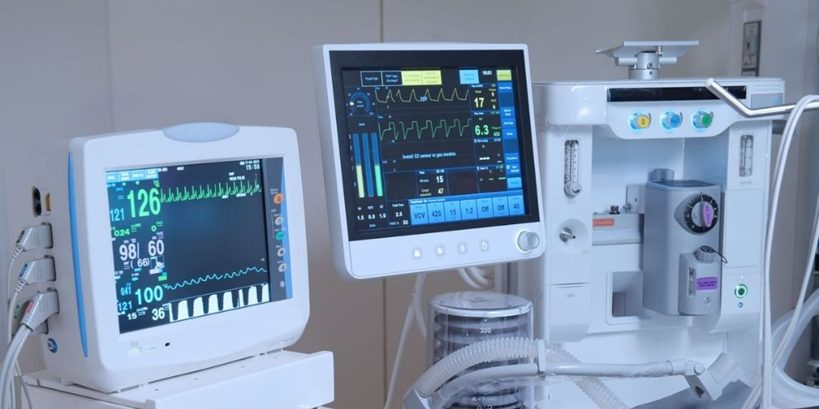
The recent HMPV scare again highlighted the varying levels of health access in India. In bustling metropolitan centres, world-class hospitals, cutting-edge medical technologies, and state-of-the-art equipment have revolutionized healthcare for the privileged.
However, for the millions of people residing in urban, semi-urban, rural, and remote areas, the lack of adequate healthcare infrastructure and access to advanced, high quality, and affordable technologies remains a major challenge.
In this context, high quality and state-of-the-art refurbished medical equipment is proving to be a lifeline. India needs tens of thousands more diagnostic imaging tools, dialysis machines, and more, in order to catch up with even Brazil’s levels of health access, e.g., around 20,000 more MRI machines and around 30,000 more CT scanners. Refurbishment is key to this goal.
Beyond Medical Bills: The Hidden Costs of Healthcare for Patients and Families
Over 65% of India’s population—almost a billion people—live in Tier-II and Tier-III cities and rural regions, where access to advanced medical technologies is a persistent issue. For many, the costs associated with accessing quality healthcare can be overwhelming.
Patients and their families not only bear the direct costs of treatment but also face substantial additional expenses and opportunity costs. For instance, patients and families must pay transportation costs, especially when the health facility in their vicinity does not offer the required services. There is also a significant opportunity cost associated with lost wages when on leave for medical care, whether for themselves or a dependent family member. In many cases, the risk of job loss due to prolonged absence further compounds the financial burden.
Refurbished – A Real-World Impact: Saving Lives, Restoring Hope
It is here that the role of refurbished medical devices becomes critical in shaping the future of healthcare in India.
Refurbished medical devices—state-of-the-art equipment that has been professionally repaired, certified, and updated—are breathing new life into healthcare delivery in underserved regions. These devices, including diagnostic imaging tools, dialysis machines, and more, can cost a staggering 40-50 per cent less than new equipment with similar functionality. This cost advantage enables health facilities across the country to procure such equipment and thereby offer high quality, safe, and affordable services.
The benefits of refurbished medical devices are clear in real-world examples from across India. Take, for instance, a remote hospital in Wayanad, Kerala. For many years, the hospital was unable to afford a new dialysis machine due to their high costs. Patients suffering from chronic kidney disease had to travel to cities like Kochi or Trivandrum, sometimes incurring significant debt to cover the cost of treatment.
Refurbishment finally enabled the hospital to afford a high-quality dialysis machine. Since its installation, the refurbished dialysis machine has given families in the region access to life-saving treatment while also restoring their financial stability.
Similarly, a community health center in the city of Moradabad, Uttar Pradesh, struggled to provide adequate healthcare to its underserved population due to limited resources. By acquiring refurbished ultrasound machines, the health center has been able to diagnose pregnancies early, detect potential complications, and serve countless women who were previously denied access.
Addressing Concerns: Quality and Safety
One concern often raised about refurbished medical devices is their quality and safety and the potential for bad unscrupulous entities to sell spurious, low quality, and unsafe equipment.
Refurbished devices can be certified and meet rigorous national and international regulatory standards. In fact, these devices are often held to even stricter scrutiny than new equipment, as they undergo comprehensive refurbishing processes, including upgrades, quality checks, and compliance with safety regulations.
The European Union, Japan, and United States are examples of countries with large and thriving ecosystems of high-quality and safe refurbished medical equipment. India can refine existing regulations–adapting best practices from the other countries and regions of the world–to put in place stringent guidelines for refurbished devices and ensure their safety, efficacy, and reliability. Unscrupulous entities can be identified and blocked from the marketplace.
The Future: Affordable, Equitable, and Sustainable Healthcare
In a country as diverse as India, where healthcare access can vary dramatically based on geography and income, refurbished medical devices represent a vital solution to bridging the healthcare gap. Over time, the efforts by the Union and state governments will enable India to become a manufacturer of new, advanced, and affordable medical equipment. In the interim, refurbished devices are crucial.
As a mission-driven hospital network, we urge the Union and state government to enable and accelerate the speed of rollout of safe, high quality, and affordable refurbished medical equipment.
This article is written by Dr. Sanjeev Kumar Singh, Medical Director, Amrita Institute of Medical Sciences.
(DISCLAIMER: The views expressed are solely of the author and ETHealthworld.com does not necessarily subscribe to it. ETHealthworld.com shall not be responsible for any damage caused to any person/organisation directly or indirectly)






